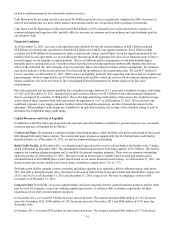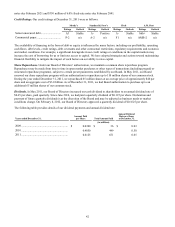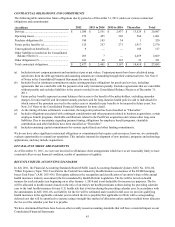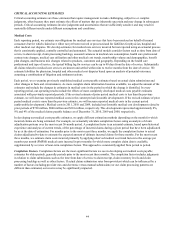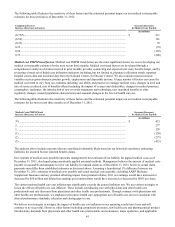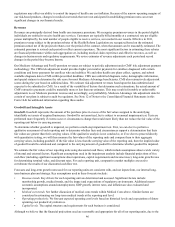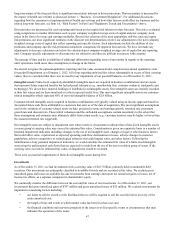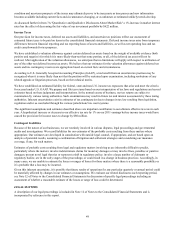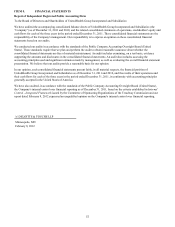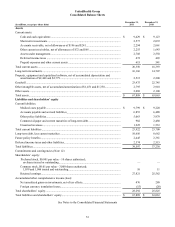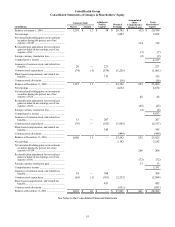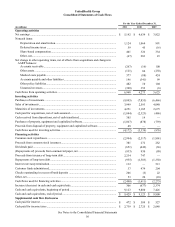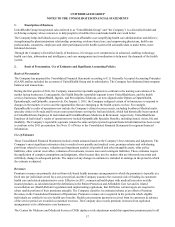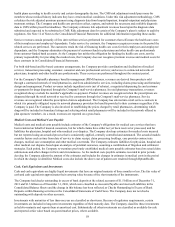United Healthcare 2011 Annual Report Download - page 52
Download and view the complete annual report
Please find page 52 of the 2011 United Healthcare annual report below. You can navigate through the pages in the report by either clicking on the pages listed below, or by using the keyword search tool below to find specific information within the annual report.50
CONCENTRATIONS OF CREDIT RISK
Investments in financial instruments such as marketable securities and accounts receivable may subject us to concentrations of
credit risk. Our investments in marketable securities are managed under an investment policy authorized by our Board of
Directors. This policy limits the amounts that may be invested in any one issuer and generally limits our investments to U.S.
government and agency securities, state and municipal securities and corporate debt obligations that are investment grade.
Concentrations of credit risk with respect to accounts receivable are limited due to the large number of employer groups and
other customers that constitute our client base. As of December 31, 2011, we had an aggregate $1.9 billion reinsurance
receivable resulting from the sale of our Golden Rule Financial Corporation life and annuity business in 2005. We regularly
evaluate the financial condition of the reinsurer and only record the reinsurance receivable to the extent that the amounts are
deemed probable of recovery. Currently, the reinsurer is rated by A.M. Best as “A+.” As of December 31, 2011, there were no
other significant concentrations of credit risk.
ITEM 7A. QUANTITATIVE AND QUALITATIVE DISCLOSURES ABOUT MARKET RISK
Our primary market risks are exposures to (a) changes in interest rates that impact our investment income and interest expense
and the fair value of certain of our fixed-rate investments and debt and (b) changes in equity prices that impact the value of our
equity investments.
As of December 31, 2011, $9.4 billion of our investments were classified as cash and cash equivalents on which interest rates
received vary with market interest rates, which may materially impact our investment income. Also, OptumHealth Bank held
$1.4 billion of deposit liabilities as of December 31, 2011 at interest rates that vary with market rates.
The fair value of certain of our fixed-rate investments and debt also varies with market interest rates. As of December 31, 2011,
$18.2 billion of our investments were fixed-rate debt securities and $11.6 billion of our debt was fixed-rate term debt. An
increase in market interest rates decreases the market value of fixed-rate investments and fixed-rate debt. Conversely, a
decrease in market interest rates increases the market value of fixed-rate investments and fixed-rate debt.
We manage exposure to market interest rates by diversifying investments across different fixed income market sectors and debt
across maturities, as well as endeavoring to match our floating-rate assets and liabilities over time, either directly or
periodically through the use of interest rate swap contracts. In the second half of 2011, we terminated all of our interest rate
swap fair value hedges with a $5.4 billion notional amount in order to lock-in the impact of low market floating interest rates
and reduce the effective interest rate on hedged long-term debt. The gain of $132 million will be realized over the remaining
life of the applicable hedged fixed-rate debt as a reduction to interest expense in the Consolidated Statements of Operations.
Additional information on our interest rate swaps is included in Note 8 of Notes to the Consolidated Financial Statements.
Since the interest rate swaps have been terminated, the fair value of our long-term debt is now more sensitive to hypothetical
changes in interest rates as the change in the fair value of the debt is no longer offset by the swaps. Also as a result of the
swaps' termination, our exposure to hypothetical changes in market rates on our interest expense is less volatile.



